The Border Collie is famous for being smart, often making the top spot on lists of the world’s most intelligent dogs. These brilliant pooches originated in the rugged terrain along the border separating England and Scotland, which is where they take the first part of their name from.
The name Collie is thought to be either a Gaelic word, meaning useful, or related to the German kuli, meaning worker. To be fair, either is appropriate as they are very useful workers!
Border Collies were a familiar part of agricultural life, used as a herding dog in the British Isles for hundreds of years, and they remain popular on farms today as well as making excellent family pets because of their playful and affectionate nature. They are the 12th most popular dog in the UK.
These wonderful working dogs have made their way into the hearts of dog owners worldwide, now placed 35th out of the two hundred in the American Kennel Club’s (AKC) breed popularity ranking.
Border Collies have two types of fur: a short, smooth coat, or a medium-length, rough coat. Both types are just made for the outdoor world, developed over many centuries of herding in the hilly regions of England.
Most people know that these dogs are the proverbial workaholics of the canine world. As well as being extremely smart, they have boundless energy that needs an outlet. This isn’t a dog that’s happy to lounge around the house!
Their popularity was given a boost in 1995 with the release of the movie, Babe, where a piglet was taught how to herd sheep by a beautiful Border Collie named Fly. Perhaps on a subconscious level, this movie (aside from inspiring a new generation of vegetarians) reinforced an idea in peoples’ minds; Border Collies are black and white.
Now, some of us know that this is just not true. But, do you know how many different colors, markings, and combinations there are? The answer might surprise you!
We’re going to explore all of these, from the ‘official’ ones in the AKC breed standards as well as non-standard colors… those that are considered ‘faults’ or are very rare.
We’ll begin with a color chart and then go into more detail about these beautiful dogs later.
Border Collie Colors Chart
AKC Standard Colors
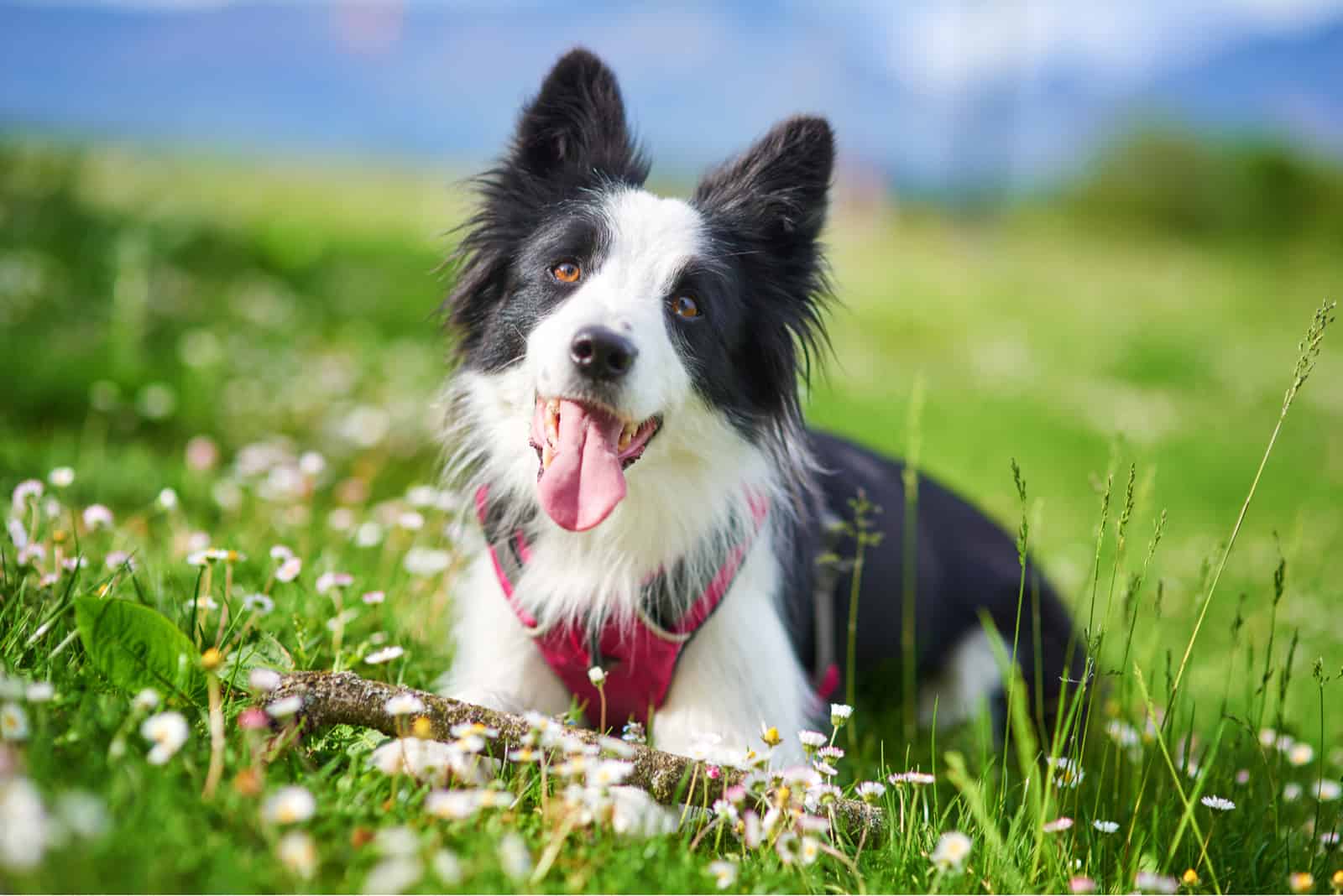
• White & black
• White & red
• White & blue
• White & blue merle
• White & red merle
• White ticked
• Black
• Blue
• Blue merle
• Brindle
• Gold
• Sable
• Sable merle
• Red
• Red merle
• Lilac
• Saddleback sable
Non-standard Colors
• White & seal
• White & gold
• Slate
• Seal
Markings
• White ticked markings
• White markings
• White markings with tan points
• White markings with tan points, ticked
• White markings with brindle points
• White markings with brindle points, ticked
• Merle markings
• Tan points
That’s a lot of colors, even without the non-standard ones! Although black & white Border Collies are more common, you can see from this chart that there are many other beautiful coat colors.
Assuming that not everyone is familiar with some of the terms mentioned above, let’s take a moment to explain some of them:
Points refer to the dog’s nose, lips, paw pads, eyelids, and toenails.
Seal is an unusual coloration; an incomplete version of sable (see below).
Ticking refers to darker spots of color on a light base coat.
Brindle is a striped pattern rather than a color.
Merle means mottled patches of color, sometimes with blue or odd-colored eyes.
Sable refers to hairs that are lighter at the base and darker at the tip, giving a beautiful effect. It is prominent in German Shepherds, but pretty rare in Border Collies.
Got that? Then, let’s move on.
Which Colors Are Acceptable?
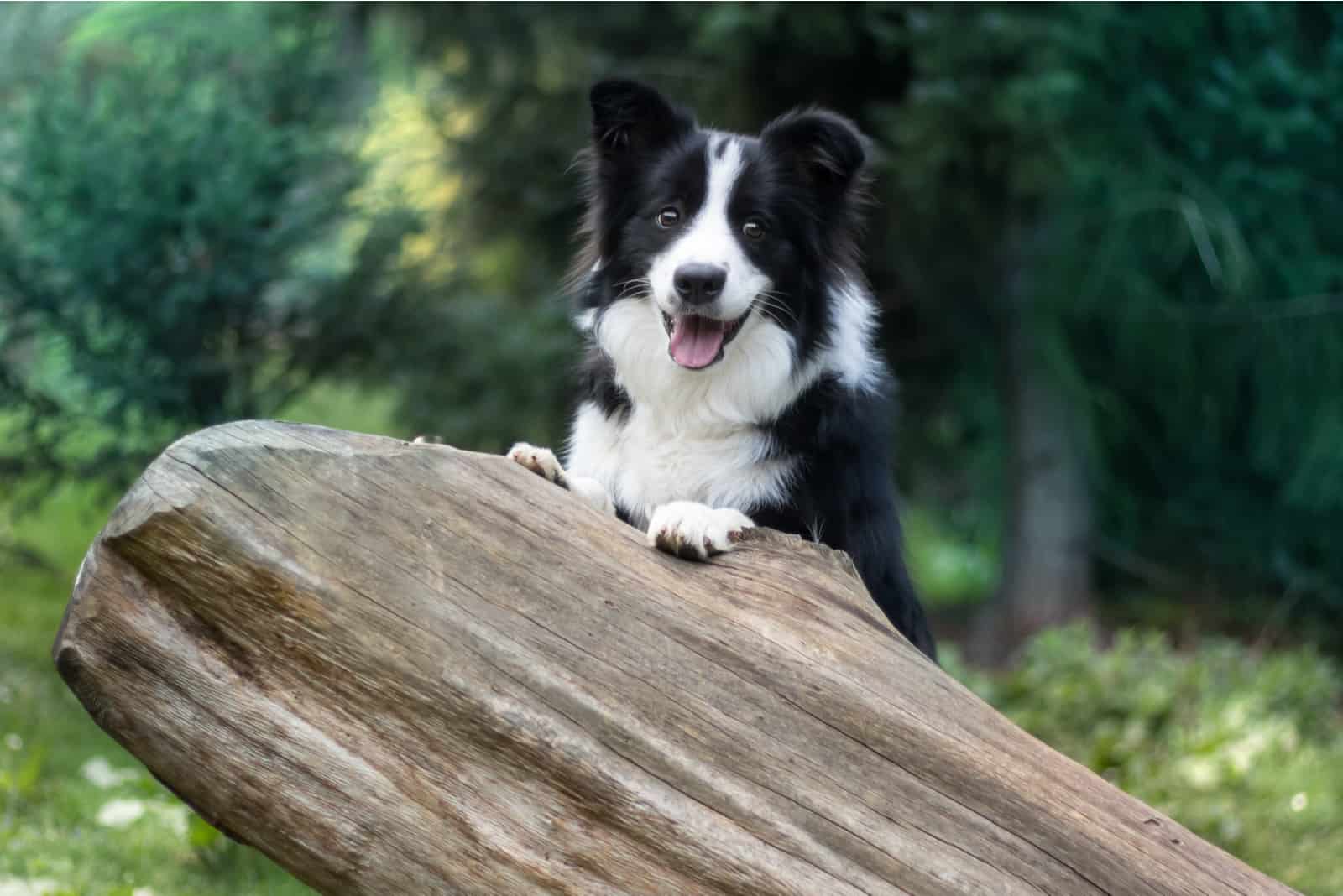
Wait, didn’t we already sort this out?
Actually, no. We’ve listed the colors accepted under the AKC breed standards, along with colors they don’t mind, but which aren’t part of their breed standards. Other kennel clubs have different rules, just to make things interesting!
What about the Canadian Kennel Club? Well, if you head north of the U.S., your Border Collie can be any color you like!
As for the United Kennel Club (based in Michigan), they accept all color combinations, including random white markings, as long as these don’t dominate the coat. They are more concerned with the physical evaluation and gait of the dog rather than the color. It seems that the only feature that would disqualify a Border Collie would be if it was albino, which is a lack of color.
Finally, if we head over to Belgium, the Fédération Cynologique Internationale (FCI) states that all colors are permitted except white!
So, who’s right and who’s wrong?
Well, nobody.
There is no right or wrong when it comes to dog colors. Each of these organizations has its own idea of conformation, which sets down rules as to how purebred dogs should look. These rules are used to award points in the show ring, and any dog that fails in any category will lose points.
Why do kennel clubs allow some colors and not others?
In some respects, it’s a way of keeping a particular breed ‘pure’. It maintains a traditional form and stops any changes in the breed’s appearance. The trouble is, this limits the gene pool, often leading to inherited health conditions.
Oddly enough, these same kennel clubs insist that their breed standards keep the dogs healthy by ruling out certain colors in the belief that the genes that create them (such as the merle gene) also carry health concerns of their own!
We’ll examine this point in more detail later.
Border Collie Color Genetics
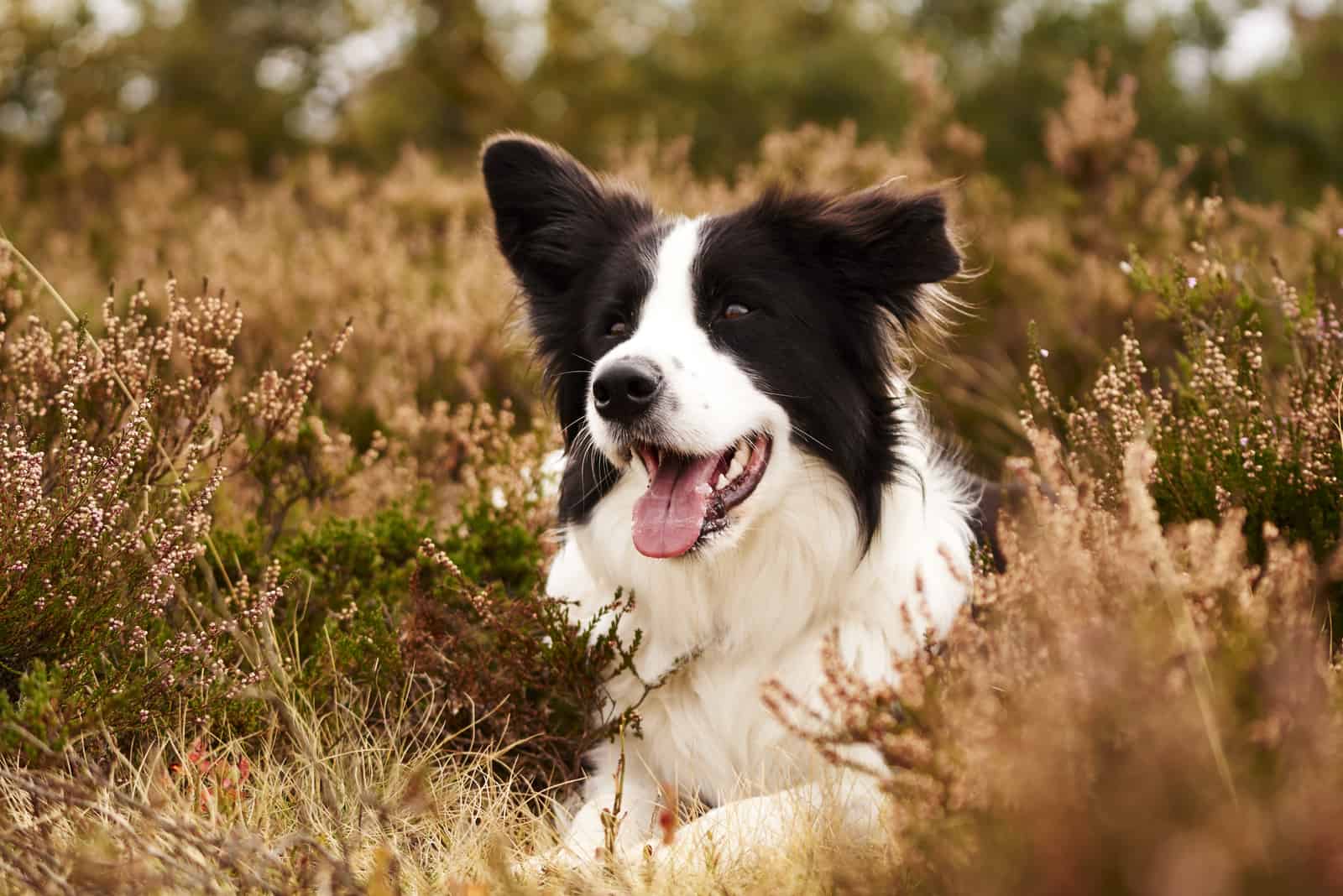
All dog breeds gain their coat colors from two pigments: eumelanin and pheomelanin.
We won’t go too heavily into the subject as it can become complicated – some dog breeders and experts don’t even fully understand it all.
Suffice to say that all dogs produce one or both of these pigments, and these are affected by the presence of certain genes. Some genes dilute the colors, creating different shades, while others cause different markings, resulting in the broad range of coat colors listed above.
Eumelanin produces black and brown pigmentation, while pheomelanin makes red and gold. Certain genes are passed on to the pup in its DNA, and these are either dominant or recessive genes.
What does this mean? Keeping it simple, it means that some genes will override others. This either makes the colors stronger or dilutes them, producing a vast array of amazing shades. A dog can have a completely white coat because it doesn’t produce any eumelanin!
Color gene dilution can also affect the dog’s points (the lips, eyelids, paw pads, etc.) making them pink, black, blue, or liver-colored. While both pigments are responsible for hair color, eumelanin also affects the eye and nose color.
Had enough science yet? Okay, let’s look at some of the different coat colors.
Border Collie, Tri-Colored

Photo from: @ozzie_bordercollie
Bi-colored Border Collies are very common, but there are tri-color examples, although these are much rarer as both parents must have the tri-color gene for it to be passed on to the pup.
This type of coat can be any base color, but it will most likely be black, tan, and white. It resembles the black and white version in every way, except for the tan markings on their chest, cheeks, legs, rump, and (occasionally) their eyebrows.
The tri-color gene is recessive, meaning that the puppy must possess two copies of this gene if it’s going to have this type of coat color. Each of these two genes has to come from either parent, so if you have two tri-color Border Collies, you will only get tri-colored pups!
Blue Merle Border Collie
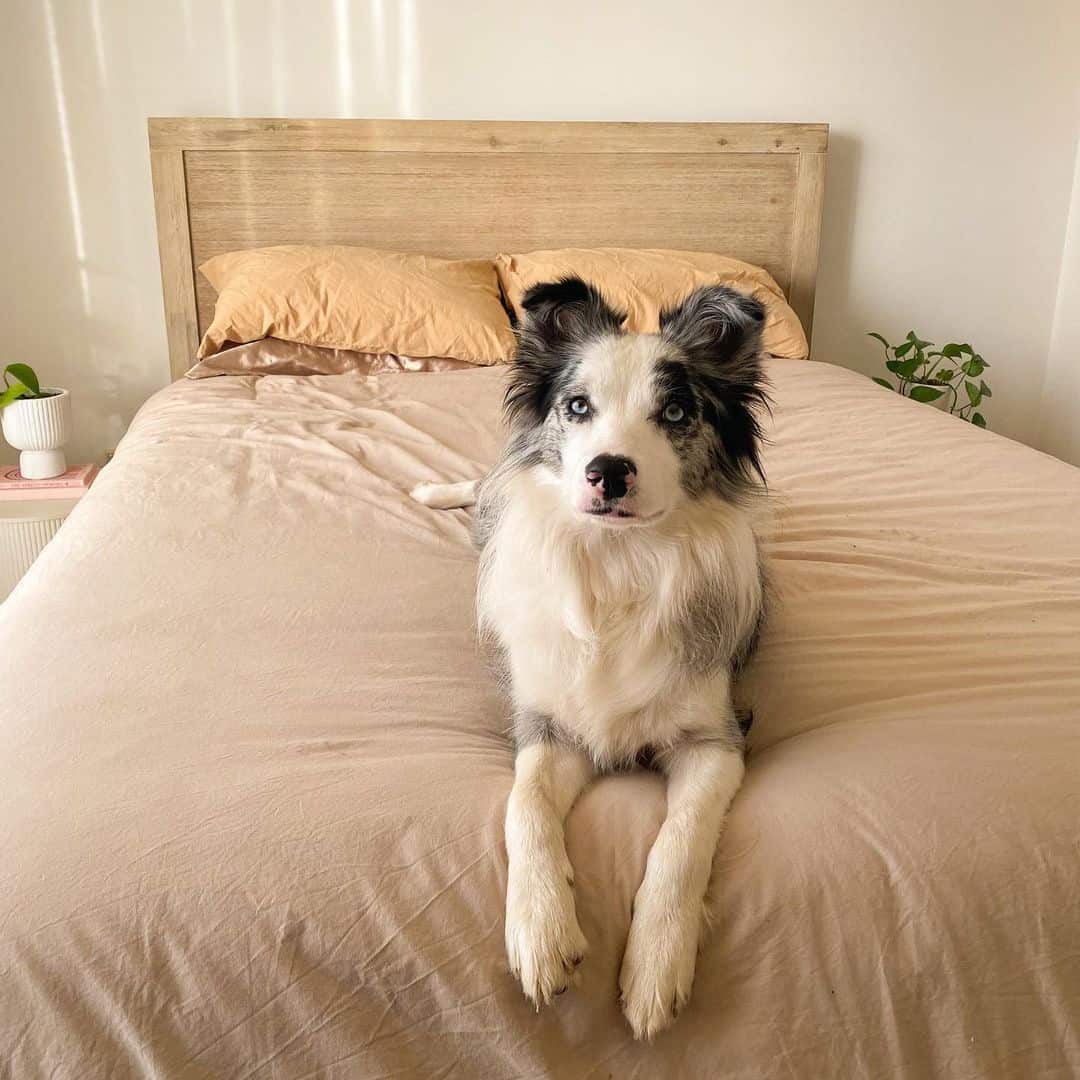
Photo from: @bettyandrosie_
What does a blue merle Border Collie look like? It has a white chest with blue-tinged hair all over the body. There will be darker patches along the back, on the face and ears, and on the tail. These will have a random, swirling, mottled pattern that makes each dog unique. This dog can have brown eyes, blue eyes, or one of each!
Before you pick this one, there’s something you should know: blue merle, and the merle pattern in general, is a controversial topic in any dog breed.
You’ve no doubt realized that this dog isn’t actually blue. Breeders and dog enthusiasts tend to become a tad flowery and poetic when it comes to naming dog coat colors! Instead, blue is a sort of grayish color. It’s all to do with a recessive dilute gene that makes an otherwise black coat turn out much lighter.
The trouble is, the genes that cause lighter-colored coats in dogs are also thought to be responsible for congenital deafness and problems with vision.
For this reason, many breeders won’t use merle dogs in their breeding programs. Some breeders will do so specifically because they know that people will pay premium prices for such unusually colored dogs. However, reputable breeders would never do this, and they certainly wouldn’t breed two merles together as this has a high risk of at least a quarter of the pups having significant auditory and/or visual defects.
Aside from the coloration and the potential health problems, there is no evidence to suggest that blue merle Border Collies are in any way different from others of the same breed in terms of their temperament, intelligence, or trainability.
Rare Border Collie Colors
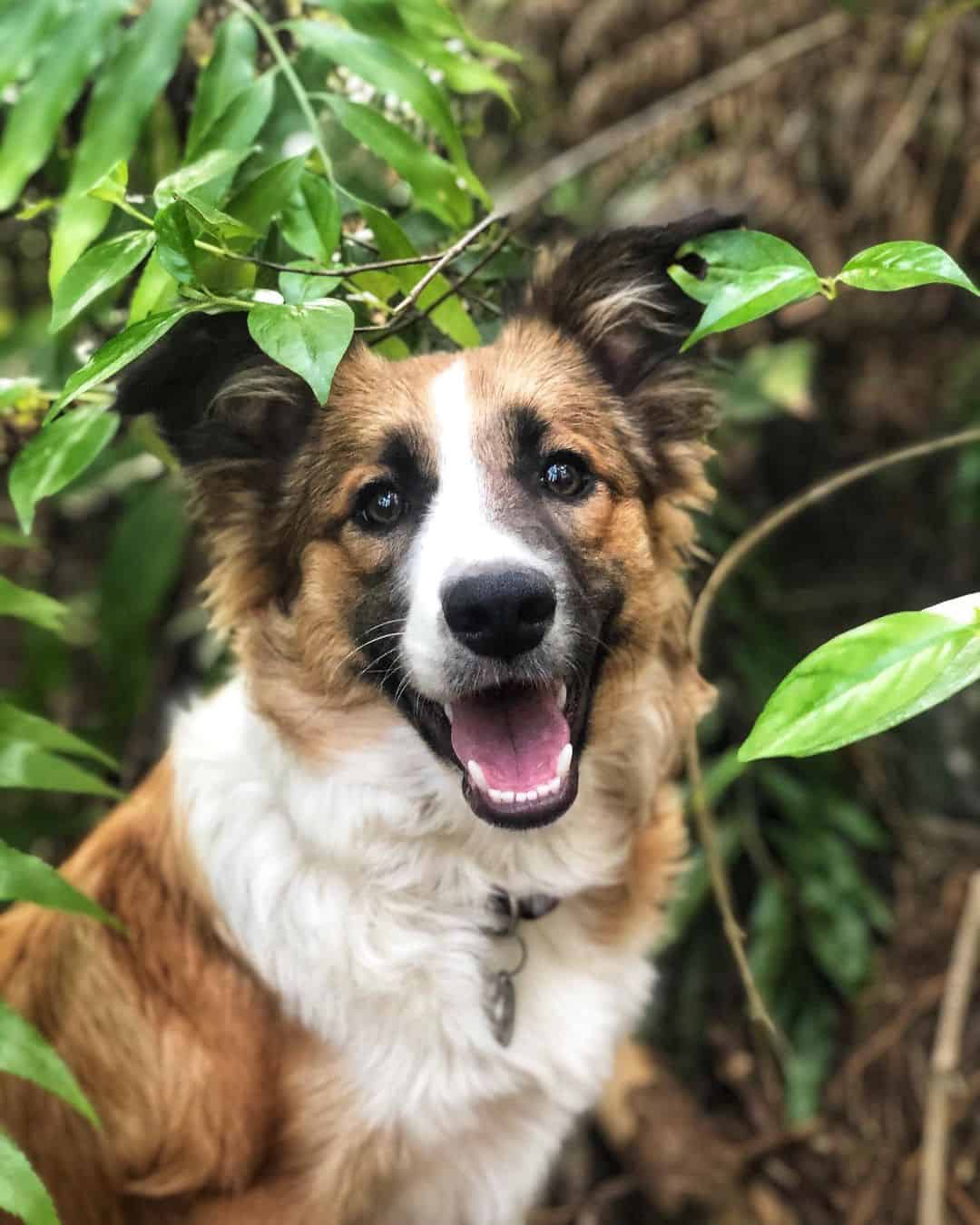
Photo from: @tailsoftwo.collies
Red Border Collies and Red Tri are the second most common types available after black and white ones, and anything outside of this is considered rare.
It is also rare to find any solid-color Border collies, and some black & white examples are actually black dogs with only a small amount of white marking, usually on the chest.
Some brindles are rare, but any type of brindle Border Collie usually causes a heated debate! Owners are frequently accused of having a hybrid rather than a purebred dog. As you can understand, this could lead to arguments. Some people insist that the tiger striping of the brindle pattern isn’t natural in the Border Collie breed; therefore, it must be a crossbreed. It’s best to listen to the experts on this one: Border Collie breeders assure us that brindles are purebred dogs!
So, we know that the brindle pattern is rare in Borders, but the red brindle, in particular, is extremely rare. It’s an amazing color for a Border, especially when offset with white on the chest, head, and neck.
Slate merle with tricolor is another rare coat color, and it is a diluted version of white, blue, or black. The dog may have gray eyes and a touch of pink about the nose and lips. It’s often difficult to distinguish between slate merle and blue merle dogs if they have a lot of white in the coat as they can appear very similar. To tell between them, you need to look at their noses: blue merle dogs will have a black nose, while the slate merles will be gray.
Sable Border Collies are quite rare, usually with a tan base coat, and often with white markings. The tan-colored hairs have black tips, giving the coat the distinctive sable look of brown and black.
In addition to this brown/black look, you can get slate sable, red sable, and blue sable. All of these colors are rare, although old paintings of Border Collies show that sable was once a common color in days gone by!
Seal Border Collies are a bit of a mystery. They may look black, but in sunlight, you can see that the coat is brown, sometimes almost liver-colored. It’s rare in Borders, but seen more often in breeds like the Boston Terrier. At present, breeders are not sure as to which genes cause this coloration!
Gold Border Collies are also called Australian red or even blondes. It’s similar in color to the Golden Retriever, though in Borders, it can vary in shade from very light to a deep, rich brown. These dogs will almost always have brown eyes and matching noses. This color is caused by a rare recessive gene.
Now, we get to the lilac Border Collie, which deserves its own section…
What Is The Rarest Border Collie Color
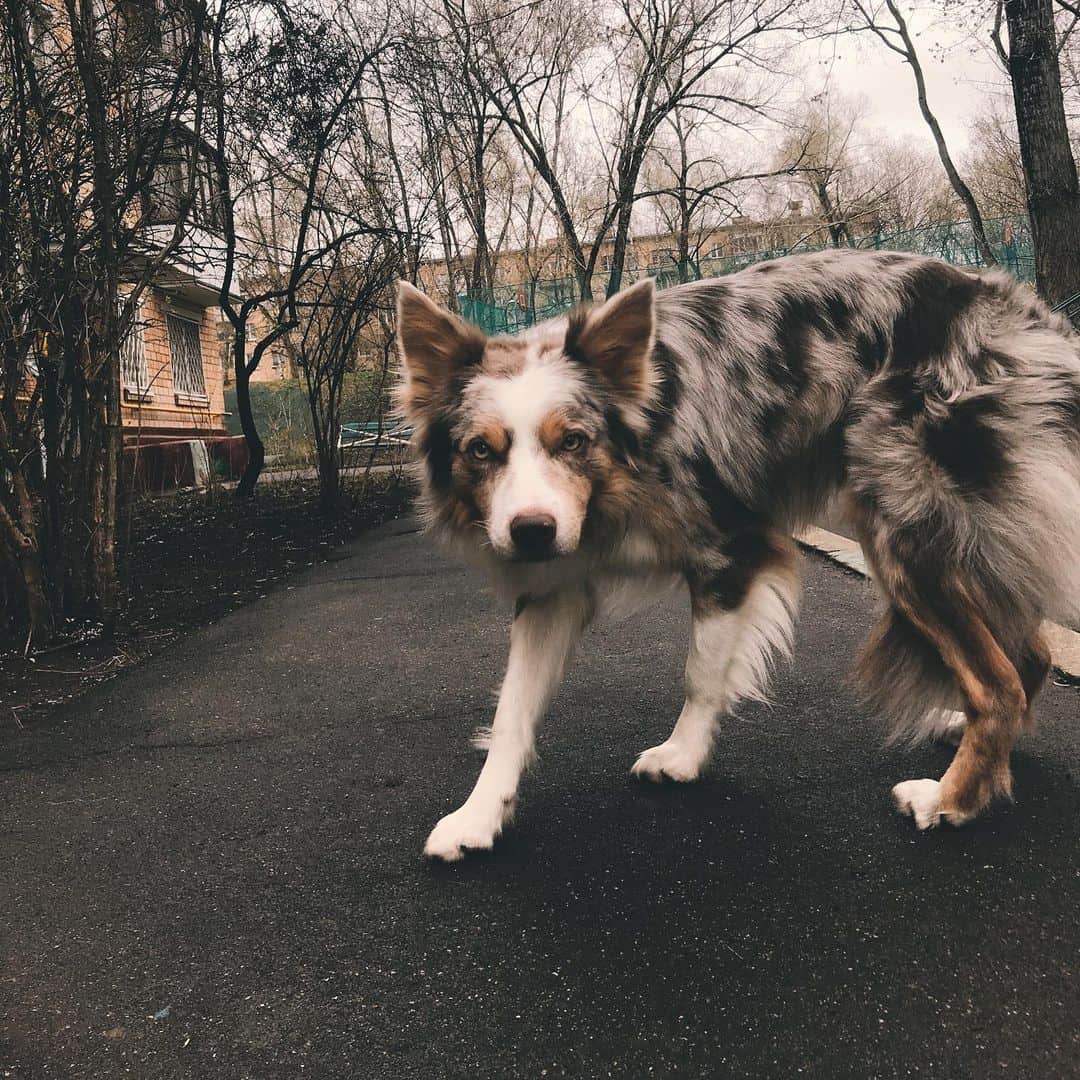
Photo from: @weks_atury
Most people agree that not only are lilac Border Collies the rarest of all, but they are probably the most beautiful of all the colors.
Of course, this is a matter of taste, but take a look at one and you’ll see what we mean.
We mentioned the tendency of breeders and kennel clubs to use elaborate color names, and lilac is a good example. Depending on the dog breed, the same color is described as fawn, isabella (in Dobermans, for instance), or even silver!
None of this takes away from the fact that this is a striking color.
It’s a version of the chocolate and white color, but with the chocolate and dilute genes. It can appear as lilac merle, lilac tri-color, or lilac merle tri-color!
Because it is so rare, it makes the dog much harder to breed. While you might agree that it’s an amazing color, you might have to wait a while if you want one.
What’s Wrong With White Border Collies?

Photo from: @piper_whitebordercollie
White dogs have long been associated with severe health problems, and for some breeds, this holds true.
However, it depends on which genes cause the white coat. But, what has the color of a dog’s coat got to do with its hearing?
Well, the dog’s ability to hear comes from a layer of cells within the ear that helps their brain to understand sounds. These cells, and those responsible for coat and eye color, come from the same source of stem cells.
If dogs don’t have these stem cells, they will have a mostly white coat, and have a good chance of being deaf in one or both ears.
Dogs with the piebald gene (such as Dalmatians) and the merle gene are at risk of deafness. Even so, the risk isn’t always as great as some people think. There are reports of breeders destroying entire litters of white puppies as they don’t want the faulty genes to be passed on. First of all, no dog should be euthanized on account of its coat color. Even if a pup is deaf in one or both ears, it is still capable of living a long and happy life with the right care.
Also, out of a litter of eight to ten pups, only two or three of them will probably have an acute hearing problem. The others stand an excellent chance of being completely healthy and have full hearing. Therefore, these dogs will have been destroyed for nothing.
Just because a Border Collie is white doesn’t mean it will be deaf. People who own white dogs sometimes tell how they’ve been approached by strangers who exclaim, Oh! Your poor dog is deaf! This is especially the case if the dog has blue eyes. Blue eyes are a result of a lack of pigment rather than a proper color. A complete lack of pigment means that the dog will be albino (with a completely white coat and pink or red eyes), which carries its own set of problems. None of this means that all white dogs are albino or will have hearing issues!
The Border Collie has an additional problem as there is a persistent myth surrounding white dogs. This myth claims that sheepdogs have to be mostly dark colors as sheep don’t respect light-colored dogs and won’t respond to their attempts to herd them!
There is no scientific foundation for this belief. Sheep will always react to dogs whatever their color.
Border Collie Coat Colors Change
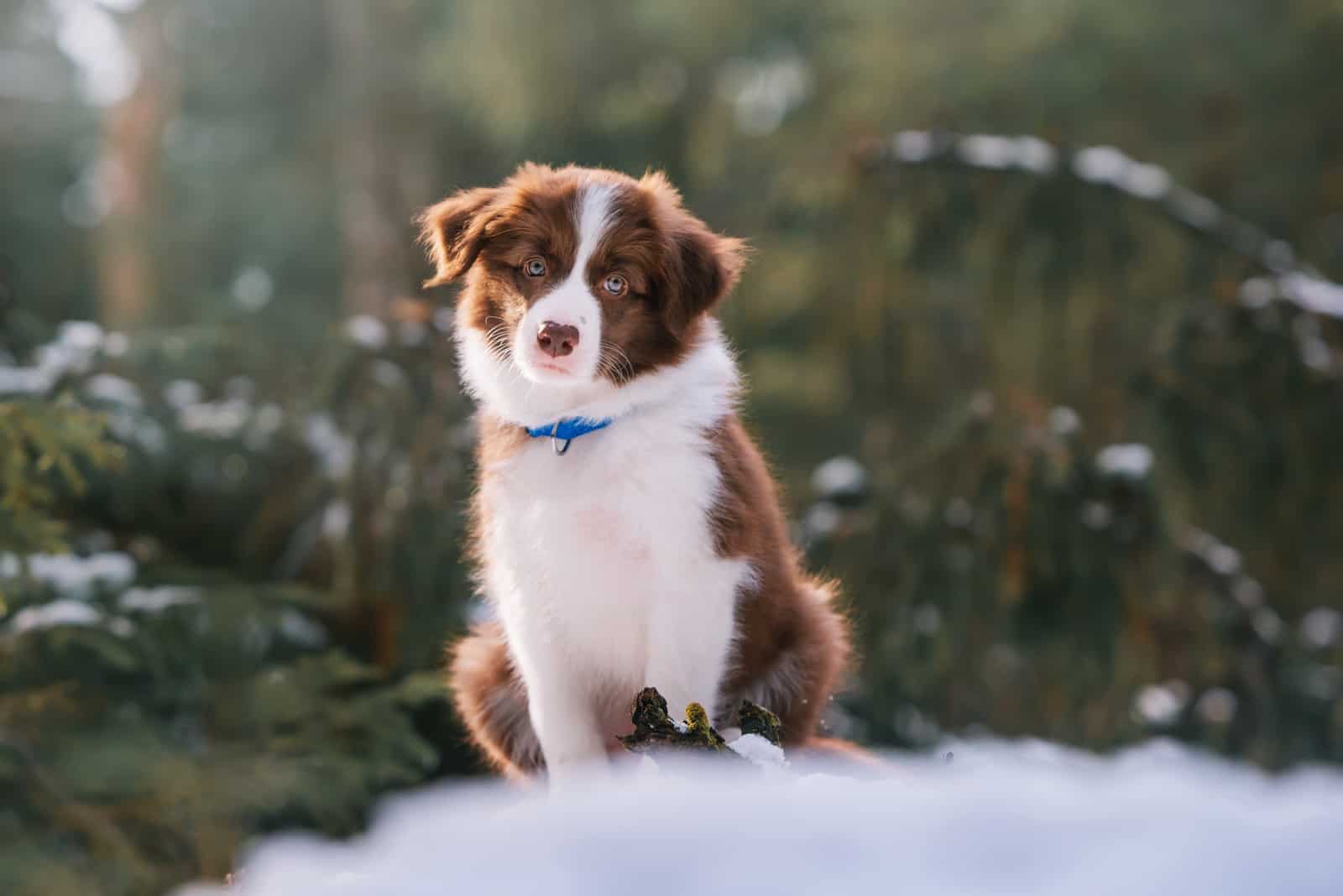
Just like many other dog breeds, Border Collie puppies will change color as they mature. It is highly unlikely that the little bundle of fur you first see at the kennel will remain the same color as it grows. In fact, this will take place very soon after you get it home.
For this reason, it’s important not to choose your pup based on its coat color at birth. Those colors and markings will alter over time until your furry friend settles into its beautiful adult coat.
For an idea of what to expect, try searching Border Collie forums online. You’ll find examples where tan puppies have lightened to a beautiful gold color or dark brown pups deepening to a silky black.
Bear in mind that the final shade and markings will be limited by the genes that your pup has inherited. If you are waiting for your tan puppy to turn a lovely shade of slate or blue, then you’ll be disappointed!
What Is The Best Border Collie Color?

Take your pick! All of them are beautiful, and different colors will appeal to different people.
The classic black & white version is definitely the most common color, and it is always going to be popular. However, it can’t be denied that the lilac Border Collie is stunning. And, what about the slate merle? Or the chocolate tri-color?
It’s always worth checking out what colors are available before you set out to get your Border Collie puppy.
However, try not to get too hung up on the color of your next furry friend. If you stick rigidly to your guns, insisting that you want a particular shade or specific markings, then you might be in for a long wait or complete disappointment.
What’s more important is your dog’s temperament and character as well as its overall health.
Breeders are generally good at what they do, but they aren’t magicians! If you’re lucky enough to have a choice of Border Collie breeders around your area, then the odds will be slightly better.
Even so, they won’t be able to produce the color of your choice to order.
Speak to them first to see what your chances are – it may just be that they have what you’re looking for, or a litter on the way that potentially has the pup for you.
It’s Not All About Coat Color
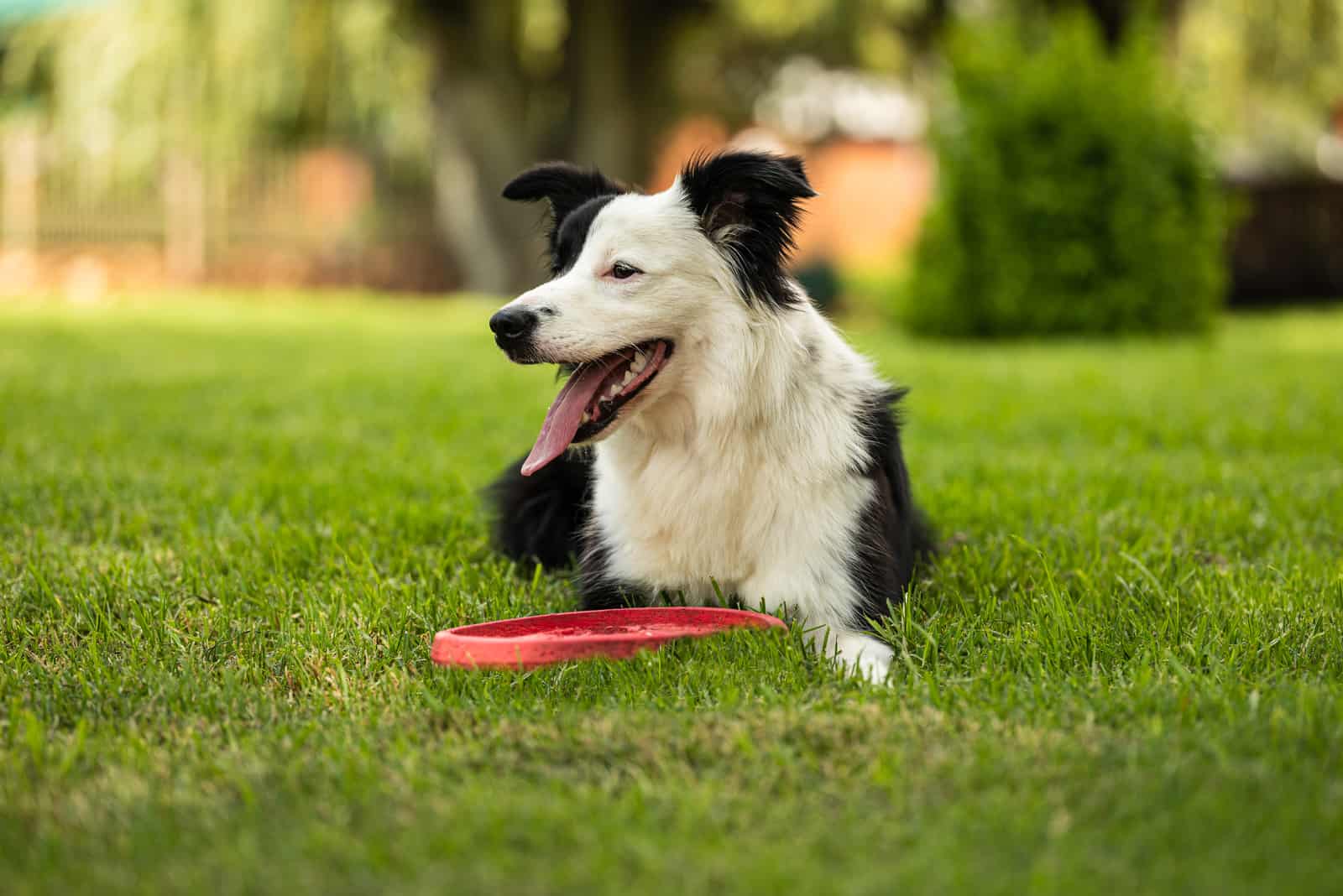
Yes, we’ve said this already, but it’s important!
It may well be that this page caught your eye as you’ve been considering getting one for yourself and you’re doing a bit of research. If so, great! It’s an excellent idea to find out all you can about any dog breed before you buy.
Border Collies are brilliant dogs. They’re athletic, strong, alert, and super-smart. They’re also loyal, affectionate, and playful. They need a fair amount of grooming to keep their coat in good condition, and they need a lot of exercise!
This dog will thrive in a household with an active family that loves the outdoor life. They need a good amount of space to run around. This is vital to their physical and mental wellbeing, and to deny them this will be cruel and detrimental to their health.
They will also need a good diet in order to maintain their energy levels. And, they’ll enjoy a cuddle when the day is done.
They’re all amazing dogs whatever color they may be.















